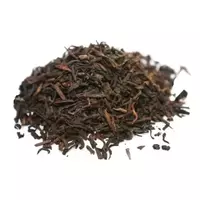Puer tea

For the people of China, tea is not just a drink that is obtained by brewing tea leaf. A whole philosophy and doctrine about the varieties, types and methods of drinking tea is associated with the drink. The Middle Kingdom accounts for about a quarter of the world's total tea grown. All varieties of Chinese tea are produced exclusively on the basis of local varieties of tea bush. China is considered the sole producer of such rare and exclusive tea varieties as oolong, white, yellow and puer tea.
Currently, the ancient Chinese variety of black puer tea is popular not only in its homeland, but far beyond its borders. Puer tea belongs to the classification of dark teas adopted in China. Puer tea differs from black tea by the cooking process. Puer is called a post-fermented type of tea drink. Puer tea has long been produced in such provinces of China as Yunnan, Guizhou, as well as Sichuan. It's not just Chinese puer tea that exists. Specific puer tea is made in Burma Thailand, Vietnam and Laos.
Composition of puer tea
Initially, puer tea was made from several varieties of large-leaved tea tree, which grows exclusively in Yunnan province. After some time, almost all the tea that was grown and harvested in the province was called puer cha or pu cha, which is translated from the ancient Chinese dialect as "puer leaf tea. " The distinctive properties of puer tea are primarily due to the composition of the product and the method of its manufacture.
Puer tea is produced by a complex method of long fermentation, the process takes up to
1. 5 months. Moreover, after the tea leaves have passed the natural fermentation process, they are not fully ready for consumption. Tea puer acquires its distinctive useful and chemical properties within a year from the moment of production. Therefore, puer is the only grade of black tea that only benefits from the impact of time. The most expensive puer varieties, which cost thousands of dollars per kilogram, were produced more than 100 years ago.
The composition of puer tea differs in that it is based on the leaves of tea bushes, which are often several hundred years old. Mixing leaves from old and young tea bushes gives tea puer an exceptional rich taste with light fruity notes. There are not a dozen varieties of puer tea. However, only two main varieties of the drink can be distinguished: Shen puer or raw puer, as well as Shu puer or cooked puer tea.
The benefits of puer tea
The question of the benefits and harms of tea puer has been raised several times. A rare type of puer tea causes both a storm of indignation and sincere admiration for the useful properties of the product. In the historical homeland, the benefit of puer tea is considered a proven and non-negotiable fact. The Chinese gave the popular name to puer tea, which sounds like "tea for 100 diseases. "
There is a list of 22 beneficial properties of puer tea that are actively used in Chinese folk medicine. The benefits of puer tea have been proven by studies by French scientists, which have identified a link between drinking a drink and lowering cholesterol levels. Puer tea is useful as a prevention of heart attacks, strokes, diseases of the digestive system. Puer is considered an excellent antioxidant that helps the body eliminate harmful compounds.
The harms of puer tea
To avoid possible harm from tea, puer should be guided by tips for preparing the product. It is worth remembering that puer tea should not be consumed on a hungry stomach, because the drink can provoke too abundant discharge of gastric juice, which harms the body, and also causes sharp pain and heartburn.
tea puer 151.8 kCal
Energy value of tea puer (Ratio of proteins, fats, carbohydrates - ju):
Proteins: 20 g (~ 80 kCal)
Fats: 5.1 g (~ 46 kCal)
Carbohydrates: 6.9 g (~ 28 kCal)
Energy ratio (bj | y): 53% | 30% | 18%
 Español
Español Français
Français Português
Português Русский
Русский 简体中文
简体中文 繁體中文
繁體中文 日本語
日本語 한국어
한국어 العربية
العربية Türkçe
Türkçe Қазақ
Қазақ Deutsch
Deutsch Italiano
Italiano Українська
Українська
